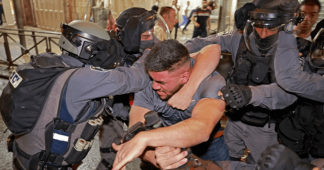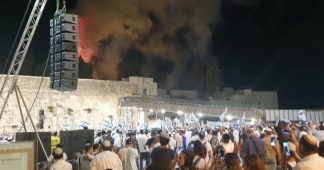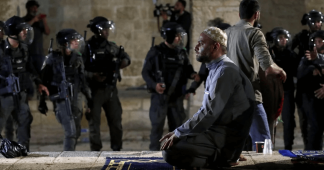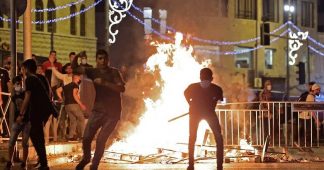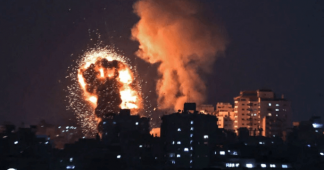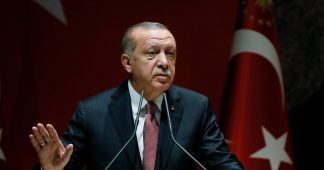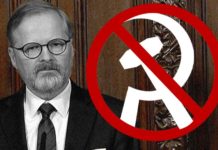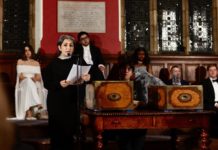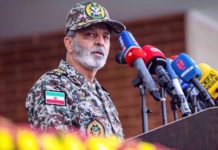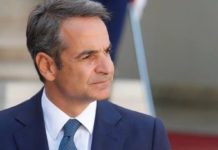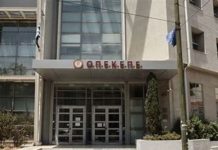By Diana Alghoul
28 August, 2019
Fifty years ago, someone set fire to al-Aqsa. Thinking he heard a message from God, an Australian tourist, Michael Denis Rohan, set fire to the holy site, wanting to allow Jews to turn it into a temple.
On the morning of 21 August 1969 at 7:20am, Palestinian Jerusalemites were in panic as they saw smoke from al-Aqsa rising. The alarms started to sound and the prayer hall in Islam’s third holiest site was found inferno.
As the fire was starting to develop, Muslim worshippers were entering the Mosque. Outside, it seemed like a perfectly normal day, with the security guard allowing people through.
As the alarm caught on to the inferno, a young man ran out screaming “fire, fire”.
Within minutes, hundreds of Palestinians, both Muslim and Christian, gathered to save as many of the artefacts in the Mosque and to try to stop the fire.
Reinforcements from other cities in Palestine were called. Fire brigades from Ramallah, Bethlehem, Tulkarem, Nablus, Hebron and Jenin tried to enter Jerusalem.
As they watched the fire destroy some of Jerusalem’s most historic landmarks, including a 1,000-year-old pulpit by Saladin, Israeli forces refused entry to fire brigades across the occupied West Bank to take out the fire.
It wasn’t until clashes took place, Israeli forces allowed the fire brigades to enter and take out the fire – an operation that took around four hours and four hours that Palestinians still haven’t forgotten until today.
“I still remember the fire as if it happened yesterday,” Sheikh Ekrema Sabri, the head of the Supreme Islamic Council and former preacher of al-Aqsa said.
“The moment the people of Jerusalem heard about the fire, they rushed in, bringing water inside cans to put out the blaze.”
Michael Denis Rohan and ‘Jerusalem syndrome’
Rohan was an Australian Christian who became famous after he tried to burn the Mosque.
In the premeditated attack, just after Muslims finished dawn prayers, he poured aviation fuel around the Mosque to set fire to it.
Two days after the attack, he was arrested and after his trial, was deemed insane.
He openly said he set fire to the Mosque, saying he did it because he thought he was instructed to do it by God.
The attack was allegedly prompted by a psychosis-like experience around his obsession of the Holy City, called the Jerusalem syndrome.
He believed that if he did it, it will bring forth the second coming of Jesus Christ.
He thought this would only be possible if he helped Jewish people build a temple where al-Aqsa currently stands, by setting the Mosque on fire.
After his sentencing, he was sent to a mental hospital for five years, until he was sent back to Australia to finish his treatment at home near his family.
Israeli involvement?
Despite Rohan showing visible signs of mental instability, there are still strong suspicions that Israel had a working hand in the infamous attack.
A week after the attack, Muslim majority nations submitted a letter to the United Nations Security Council, urging the world to recognise Israel’s participation in the attack.
The Jordanian ambassador to the UN accused Israel of capitalising on Rohan’s mental state and prompting the attack on al-Aqsa.
“According to news that originated from Israeli sources, the Australian suspect is a friend of Israel who was brought by the Jewish Agency to work for Israel,” Mohammed El Farra said.
The Jewish Agency is a state-linked organisation that encourages Jews from across the world to make a connection to Israel. According to El Farra, Rohan had strong links with the Jewish Agency despite not having Jewish roots.
“The Jewish Agency arranged for the Australian to work in a Kibbutz for some months, so that he could learn the Hebrew language and acquire more of the Zionist teaching.”
A Kibbutz is a Jewish settlement movement that is based on forming an agricultural community.
“The report published in the Jerusalem Post – an Israeli newspaper – of 25 August 1969 concerning the life of this Australian in the Kibbutz and his dreams of building Solomon’s temple casts doubt on the case and adds to the fears and worries of the Muslims about their holy shrines; it also throws light on who is the criminal and who is the accomplice,” he added.
Others accuse Israel of allowing the fire to continue by not allowing Palestinians and fire brigades from the rest of the occupied West Bank to put out the fire.
The struggle lives on
For Palestinians, the fire of Jerusalem was not an isolated incident – until today it remains a symbol of Israeli complicity in wiping out non-Jewish heritage of Jerusalem.
For at least eight years, Israel has been building a tunnel underneath the occupied neighbourhood of Silwan, south of al-Aqsa, as a part of the Kedem settlement project.
The settlement tunnel puts the infrastructure of the neighbourhood at risk with dozens of houses already being damaged. There are fears that the project could also weaken the foundations of al-Aqsa.
Last week, Gaza-based group Hamas released a statement in memory of the attack.
“We call upon all Palestinians, along with all Hamas members and officials, to express their outrage and participate in the massive popular and peaceful activity next Friday in order to face off the Israeli and US schemes and back Palestinian defenders of al-Aqsa,” the group said in a press release on Tuesday.
Before this happened, Jordan, the custodian of al-Aqsa, summoned Israel’s ambassador in protest violations against Muslim worshippers at al-Aqsa during Eid al-Adha prayers.
Clashes broke out between Palestinian worshippers and Israeli security forces, with police firing sound grenades and rubber-coated steel bullets at protesters on the first day of the Eid al-Adha holiday.
The clashes intensified when Israeli authorities reversed a decision to bar Jewish visitors from the site on the day, which coincided with the Jewish Tisha B’av holiday.
This happened in spite of the fact that all Jerusalem mosques decided to close down for Eid al-Adha to encourage Jerusalemites to pray together at al-Aqsa, to protect each other and the holy sanctuary from the Israeli attacks they were anticipating.
With Jerusalem being under a full Israeli annexation process, with the blessing and support of the United States, the memory of al-Aqsa’s inferno lives as just one of the many assaults on non-Jewish symbols of Jerusalem.
With their city being annexed as Israel spearheads its illegal settlement project, Jerusalemites are left in a constant state of anxiety of being made homeless if Israel demolishes their homes.
Compared to their Israeli counterparts, Palestinian Jerusalemites are living under extortionate levels of poverty.
The poverty rate for Palestinians in Jerusalem stands at 72.9 percent, whereas the poverty rate for Israelis in the conflicted city is 29.8 percent.
Jerusalem is a city holy to all three Abrahamic religions and it’s home to both Palestinian and Jewish Jerusalemites. For Palestinians, the inferno that happened 50 years ago cannot be a distant memory when their identity continues to be under threat by the brutal Israeli occupation.
* Diana Alghoul is a journalist at The New Arab.
Published at english.alaraby.co.uk
